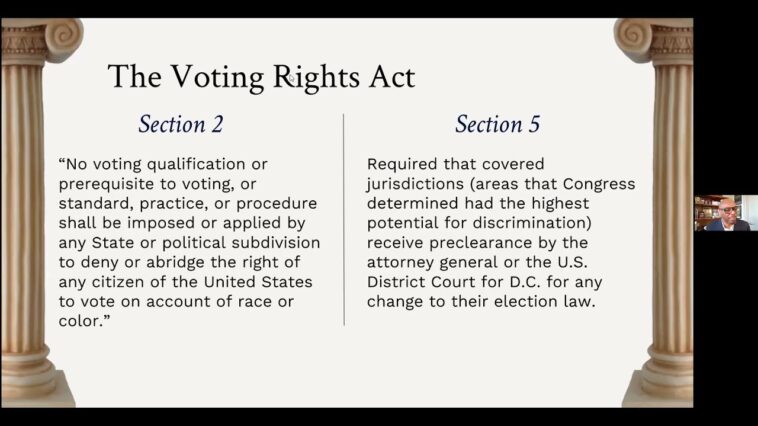
The Fragility of Voting Rights in the US
The History of Voter Suppression
The Voting Rights Act (VRA) was adopted in 1965 to prevent discriminatory voting practices against minority voters. Section 5 of the VRA specifically required certain jurisdictions with a history of discriminatory voting practices to obtain federal approval before changing their voting laws, a process known as federal preclearance.
However, in 2013, the US Supreme Court ruled in Shelby County v. Holder that Section 5 was no longer necessary, effectively gutting it and opening the doors for a wave of voter suppression laws and practices across the country.
The Latest Threat to Voting Rights
Now, another key provision of the VRA is at risk. In November, the 8th US Circuit Court of Appeals ruled that private litigants can no longer bring lawsuits under Section 2 of the VRA in seven states, deciding that only the US attorney general can bring suits.
This decision, if adopted widely, “would end Section 2, in practice”, according to Douglas Spencer, an election law professor at the University of Colorado. This could be devastating for minority voters in particular, who may not have the resources or ability to bring lawsuits against states violating their voting rights.
Protecting Voting Rights
One potential avenue for voters aiming to enforce the VRA is through the US Code 42 Section 1983, which allows private litigants to sue state officials for constitutional rights violations when an official is acting under the color of state law. However, if Section 1983 was also eliminated, individuals would be shut out of the courthouse to enforce their own voting rights, leaving the DOJ as the only option for enforcement.
While state-level protections are another safeguard for voting rights, only a few US states have passed their own VRA laws. Therefore, experts believe amending the language of Section 2 to explicitly state that private parties have a right of action would be the most effective way to prevent the potential erosion of voting rights.
The DOJ’s Ability to Enforce the VRA
The Department of Justice (DOJ) already pursues or intervenes in cases regarding voting policies that violate federal laws like the VRA. However, former staffers have alluded to the agency’s limited capacity on VRA enforcement, calling for individuals’ ability to sue under Section 2 to offset the agency’s “limited resources and lack of capacity”.
If the DOJ’s interest were to be piqued by a ruling that denies private right of action under Section 2, it may not impact how the agency operates. Instead, individuals in affected states would have to assert claims under Section 1983.
Conclusion
While the 8th Circuit’s decision is concerning, there are still avenues for enforcing voting rights, and state-level protections and DOJ involvement can help maintain the integrity of US elections. However, until the language of the VRA is amended or the DOJ’s capacity to enforce voting rights increases, minority voters and voters in affected states may face a higher risk of disenfranchisement in the upcoming elections.
Originally Post From https://www.democracydocket.com/analysis/can-the-voting-rights-act-survive-if-individuals-cant-sue-under-section-2/
Read more about this topic at
Vote Suppression
Fighting Voter Suppression


